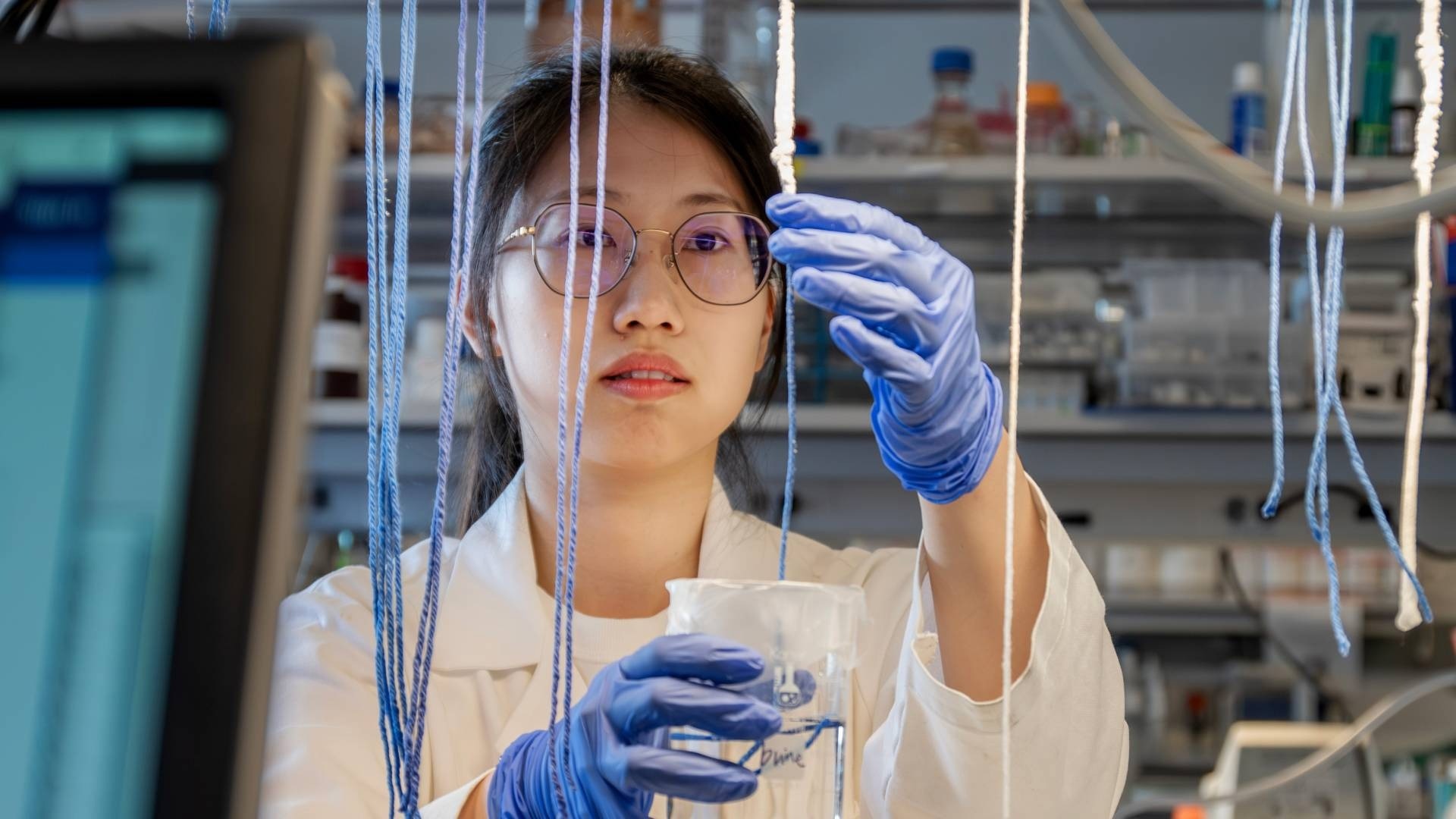The growing demand for lithium underscores its indispensable role in our everyday existence. From powering electric vehicles (EVs) and laptops to fueling mobile devices, lithium also serves as a vital component in batteries designed for storing energy harnessed from renewable and clean sources.

Image Credit: Bumper DeJesus, Andlinger Center for Energy and the Environment / Princeton
However, the process of lithium extraction has its challenges, placing considerable strain on both land and essential energy resources. It is also a time-consuming endeavor. Furthermore, the environmental ramifications associated with lithium extraction can be severe, encompassing issues such as air and water pollution, land degradation, contamination, and disruption to local communities and wildlife.
In a recent breakthrough, researchers from Princeton University have devised an extraction method that significantly reduces the amount of time and land required for lithium production, offering an environmentally friendly solution to a critical energy challenge. Their work, published in the journal Nature Water, suggests this innovation could help overcome hurdles in global electrification and decarbonization.1
String Theory
The research team's approach involves porous fibers twisted into strings, engineered with a water-loving core and a water-repelling surface. When these strings are immersed in a saltwater solution, water journeys up the fibers through capillary action, akin to how trees draw water from roots to leaves. What makes this method truly remarkable, however, is its ability to concentrate lithium and sodium ions efficiently.
As the water evaporates, the salts become increasingly concentrated and eventually form lithium chloride and sodium chloride (table salt) crystals on the strings. Beyond its capacity for salt concentration, this technique also prompts the selective crystallization of lithium and sodium along the strings due to their distinct physical properties.
Sodium, characterized by its lower solubility, forms crystals in the lower region of the string, while the highly soluble lithium salts crystallize closer to the top. This inherent separation enabled the research team to extract lithium and sodium independently, sidestepping the need for additional chemical processes.
Such a method not only enhances efficiency but also offers an environmentally friendly solution to lithium extraction, potentially reshaping the landscape of clean energy technology.
Our approach is cheap, easy to operate, and requires very little energy. It’s an environmentally friendly solution to a critical energy challenge.
Jason Ren, Professor of Civil and Environmental Engineering, Princeton
Scaling From the Lab to Industry
While the team has overcome the land resource issue with their method, scaling up from the lab to industry will require more research and development. However, if successful, the team believes that, once scaled up, the method could yield lithium harvests in less than one month.4
This breakthrough could potentially reshape the landscape of lithium production sources, particularly benefitting geolocations believed to contain lithium at lower concentrations. Implementing this innovative process could alleviate the pressure on existing production sites, reducing the need for over-mining and alleviating the burden on global ecosystems, which are commonly impacted by the extraction of continental brines and salars.
Our process is like putting an evaporation pond on a string, allowing us to obtain lithium harvests with a significantly reduced spatial footprint and with more precise control of the process.
Sunxiang (Sean) Zheng, Postdoctoral Fellow
The Princeton researchers are already working on a second generation of the technique, aiming to enhance efficiency, increase throughput, and gain more control over the crystallization process. This continuous improvement process could make the method even more appealing for widespread, large-scale adoption.
Green Energy Futures
Princeton University’s groundbreaking extraction technique offers hope for a greener, more sustainable energy future. By significantly reducing the environmental impact of lithium production and unlocking new sources of this vital resource, the innovation paves the way for a cleaner world. It serves as a crucial catalyst in the transition to a low-carbon society, providing a more efficient and eco-friendly path forward for the clean energy and electric vehicle industries.
References and Further Reading
- Chen, X. et al. (2023) ‘Spatially separated crystallization for selective lithium extraction from Saline Water’, Nature Water, 1(9), pp. 808–817. Available at: https://www.nature.com/articles/s44221-023-00131-3#:~:text=The%20spatially%20separated%20crystallization%20enables,potential%20process%20for%20scale%2Dup.
-
Vera, M.L. et al. (2023) Environmental impact of direct lithium extraction from Brines, Nature News. Available at: https://www.nature.com/articles/s43017-022-00387-5 (Accessed: 22 September 2023).
-
Pilkington, B. (2022) Opportunities and challenges of lithium mining, AZoMining.com Available at: https://www.azomining.com/Article.aspx?ArticleID=1722 (Accessed: 22 September 2023).
-
Disclaimer: The views expressed here are those of the author expressed in their private capacity and do not necessarily represent the views of AZoM.com Limited T/A AZoNetwork the owner and operator of this website. This disclaimer forms part of the Terms and conditions of use of this website.